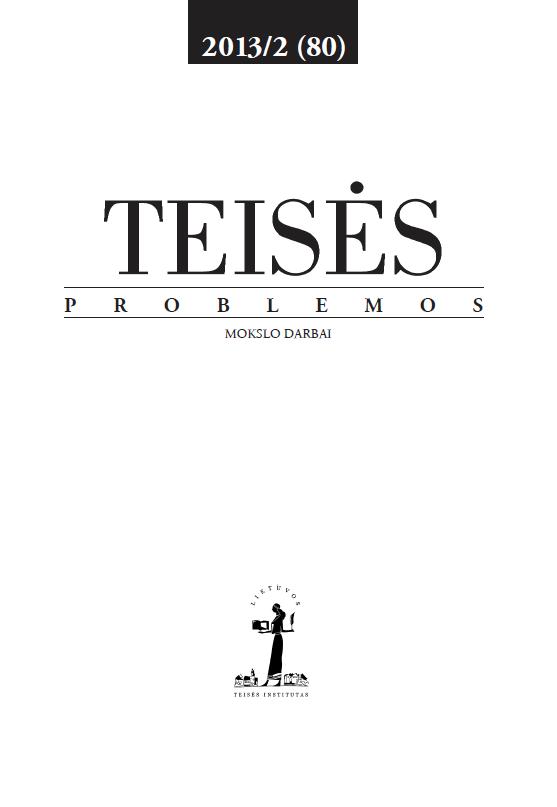Europos Žmogaus Teisių Teismo argumentavimas remiantis ankstesniais savo sprendimais
Reasoning with Previous Judgments in European Court of Human Rights
Author(s): Johanas BaltrimasSubject(s): Human Rights and Humanitarian Law, EU-Legislation
Published by: Lietuvos teisės institutas
Summary/Abstract: Well defined legal reasoning is a way to achieve harmonious and predictable implementation of law. In this paper reasoning with judicial precedents is considered as a superior alternative to speculative reasoning which is not directly based on any source of law. Judicial precedents offer the advantage of law being publicly announced in advance. Meanwhile this is not a common attribute of the logically based search of implicit meaning between the lines of statutory rules. Therefore this research paper is focused on describing mostly distinctive features of reasoning with precedents of European Court of Human Rights. Distinuished examples are evaluated for their potential to be adopted in Lithuanian legal practice. Additionally the theoretical implications of the findings are discussed, particularly on the verification of hypothesis „the question whether application of previous decision is eligible is determined merely by the similarity of two cases“. Familiarity with the basic features of reasoning in the decisions of European Court of Human Rights is also valuable as the necessity to apply or interpret the European Convention of Human Rights arises in the national courts. The research includeded analysis of 50 decisions of European Court of Human Rights within the period of recent 5 years. Analysed decisions were selected from cases, regarding the impartiality of national courts. 312 examples of reasoning with precedent were distinguished and each described by its mostly distinctive features. This led to distinguishing four mostly important types of reasoning with precedents which were distinguished based on the entirety of features (some features might be common for more than one type) with the biggest focus on the purpose and role of precedent. Empirical research led to find that usually precedents are used to (1) construct legal principles, (2) select the material facts for the case, (3) legally qualify separate individual circumstances of the case and (4) to directly base the final conclusion by analogy of cases. Respectively, description of these types implies the finding that the fact whether the precedent is applicable in present case is determined by different levels of similarity of cases, depending on the purpose and role of precedent. Also may be noted that several examples of reasoning with precedents provide certain advantages, therefore are recommended for adoption in national practice.
Journal: Teisės problemos
- Issue Year: 2013
- Issue No: 80 (2)
- Page Range: 5-50
- Page Count: 46
- Language: Lithuanian

